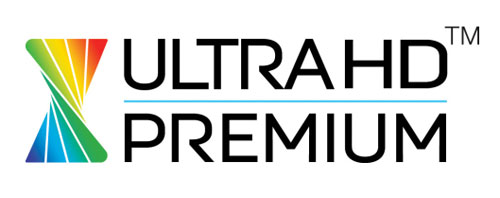The UHD Alliance (UHDA) – a global consortium comprising some of the biggest names in the consumer electronics industry including manufacturers such as LG, Panasonic, Samsung and Sony, as well as content creators like Netflix, Walt Disney and 20th Century Fox – has published the minimum specifications that define a premium, full-fat ultra high-definition (UHD) experience for consumers in the home. Products and services which meet the performance metrics will be eligible to license a “Ultra HD Premium” logo from the UHDA for promotional and marketing purposes.

Announced this week at the UHD Alliance’s press conference at the Consumer Electronics Show (CES) 2016 in Las Vegas, here are the required specifications for a television to receive the “Ultra HD Premium” logo:
Some readers may be wondering why there are two separate specifications listed for contrast performance. In short, they have been devised to cater for the differing performance characteristics of LED LCD (which is capable of hitting higher luminance levels but with weaker blacks) and OLED (whose black level is significantly deeper but can’t go as bright) display technologies.
Interesting too is the fact that support for either the HDR10 or Dolby Vision HDR format is not stipulated. Note that the UHD Premium specifications currently apply to TVs only, with the criteria for projectors yet to be established.
Delving through these parameters, it’s clear that most 2015 4K TVs would automatically be ruled out from ever displaying the “Ultra HD Premium” badge, mainly because of insufficient peak brightness. Peak luminance on LG’s EF9500/ EG9600 and Panasonic’s CZ950 OLED televisions was capped at 450 cd/m2; whereas even the best-performing edge-lit LED LCDs last year (such as Samsung’s JS9000 and JS8500) topped out at 600 cd/m2. Only the Sony X94C and perhaps the Samsung JS9500 – both featuring full-array local dimming (FALD) backlight technology – stand a chance of receiving the “Ultra HD Premium” certification retroactively.
This does not mean that the 2015 4K TV you own is immediately obsolete, just that it won’t deliver as good a UHD and HDR experience as approved “Premium” sets.
Moving forward, Samsung has straight away announced that its entire 2016 SUHD TV lineup has been awarded the UHD Premium certification by the UHDA. Although we’re still not sure how the peak luminance and black level criteria are measured (does the 1000 nits and 0.05 cd/m2 blacks need to be both present on screen at the same time? if not, then it’s not inconceivable that an edge-lit LED LCD with only frame dimming may pass, as it shuts off/ dims down its LEDs for full-field black measurement), we hope that Samsung’s announcement means that even its sub-flagship SUHD models will be equipped with FALD albeit with less dimmable zones. Guess we’ll find out in less than 24 hours’ time.
Updated 7pm: Confirmed that the peak brightness and black level measurements are simultaneous contrast/ ANSI.